How to Grow, Harvest and Brew Homemade Herb Tea
The next time you tend the herbs in your garden, consider this: It's easy and fun to grow, harvest, blend and brew your own herb teas. Teas made from herbs such as chamomile, mint and lemon balm are refreshing and delicious.
"Teas made from the garden taste great and, when no sweeteners are added, are calorie-free," says registered dietitian Susan Weiner, 2015 American Association of Diabetes Educators (AADE) Diabetes Educator of the Year and author of Diabetes: 365 Tips for Living Well." Herbal teas are a great option for those wishing to embrace a healthier lifestyle and nutritious diet."1
Technically known as tisanes, herbal teas consist of herbs that you steep in hot water to release flavor. With a little practice, you can brew your own signature teas harvested from your garden.
Easy-to-Grow Tea Herbs
When planting tea herbs, fortify the soil with nutrients by amending with organic compost. Keep tea herbs hydrated by watering them when the top 2 inches of soil has dried out. Promote vigorous growth by fertilizing the plants monthly during the growing season with a well-balanced fertilizer, such as Lilly Miller® All Purpose Planting & Growing Food 10-10-10, and regularly trim back herbs used for making tea and cooking. The more you prune them, the more they'll grow.

Just about any herb can be used to make tea, but some make tastier teas than others. The following herbs result in flavorful brews. These plants grow in full sun to light shade and produce foliage and/or flowers spring through fall.
Anise hyssop (Agastache foeniculum): The leaves of this perennial herb have a delicate licorice/anise flavor. The plant dies back in winter and resumes growth in spring. Growing 2 to 4 feet tall, it features purple flower plumes that are visited by hummingbirds and butterflies.2

Basil: Scented basils, such as lemon, clove, Thai and cinnamon, make flavorful herbal teas. Basil grows 12 to 18 inches tall and foliage color ranges from green to purple.3 This herb is sometimes attacked by aphids and whiteflies, both of which can be controlled by applying an insecticide for herbs.

Bee balm (bergamot): This orange-flavored herb is sometimes used in Earl Grey blend teas. Red bee balm (Monarda didyma) has a red flower that makes for a striking addition to the landscape. The plant grows 3 feet high.4
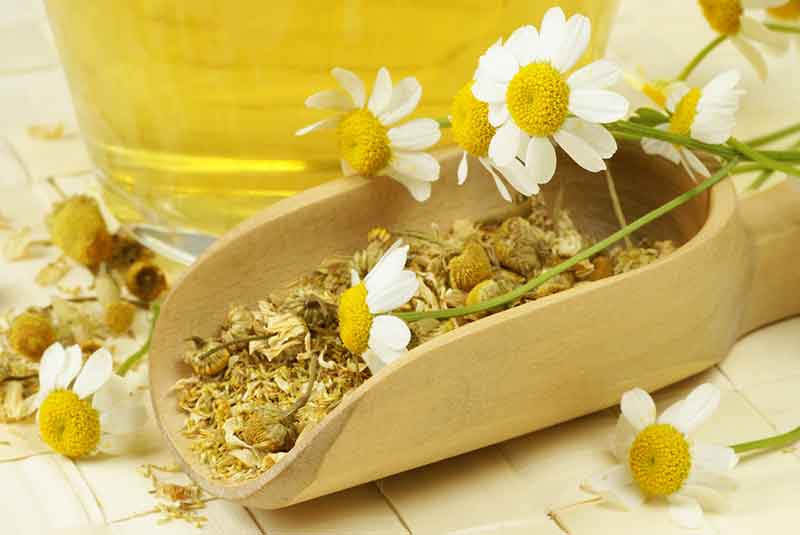
Chamomile: This perennial grows 20 to 30 inches tall5 and features white flowers that give chamomile tea its distinctive apple-like taste.
Many people find the flavor of chamomile soothing and drink this type of tea to relax and unwind," says Weiner. A variety of studies on animals show that chamomile can reduce anxiety and help with sleep.6 One controlled study on humans showed that it eased anxiety symptoms.7
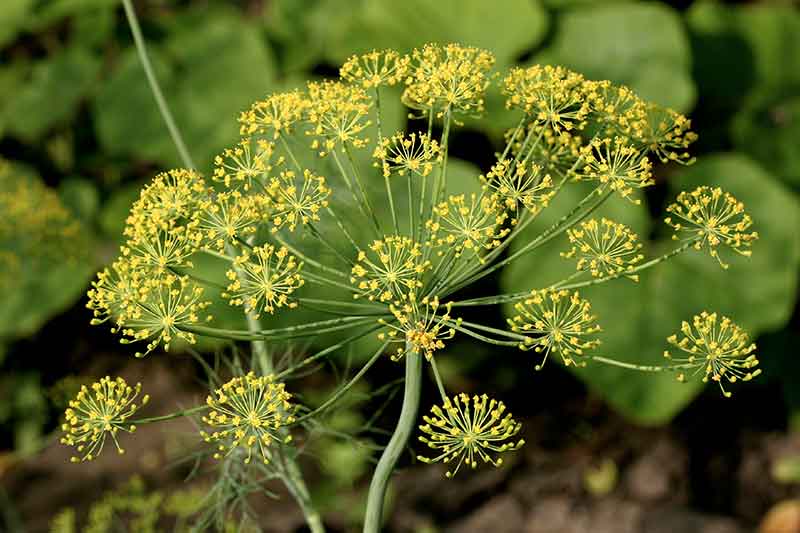
Fennel (Foeniculum vulgare): Dried, crushed seeds and fresh or dried leaves of this plant impart a sweet, licorice flavor to tea. The plant grows 3 to 6 feet high and has yellow flowers that attract bees.8
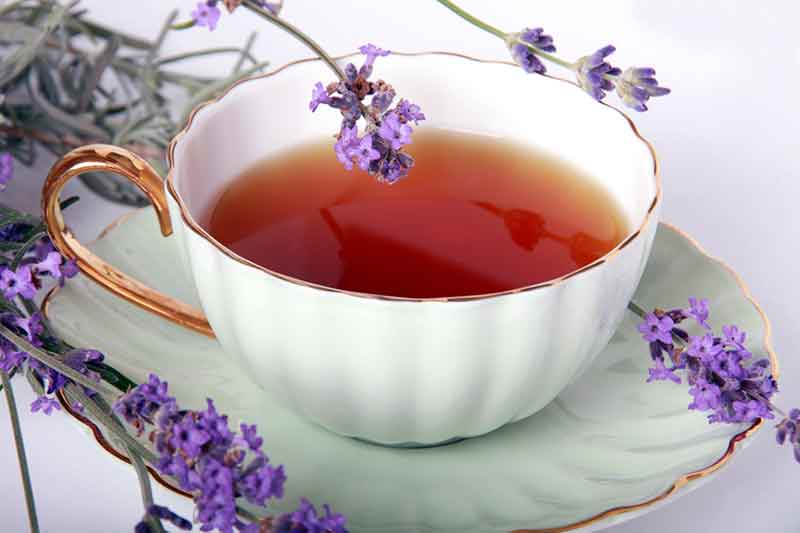
Lavender: This fragrant herb lends a distinct floral taste to tea. English lavender (Lavandula angustifolia) is the best choice for tea brewing. The plant grows 1 to 3 feet tall and attracts bees and butterflies.9
"Lavender in all forms is known for its calming effects," says Weiner. "Lavender tea contains oils that may have a soothing effect on insomnia."10
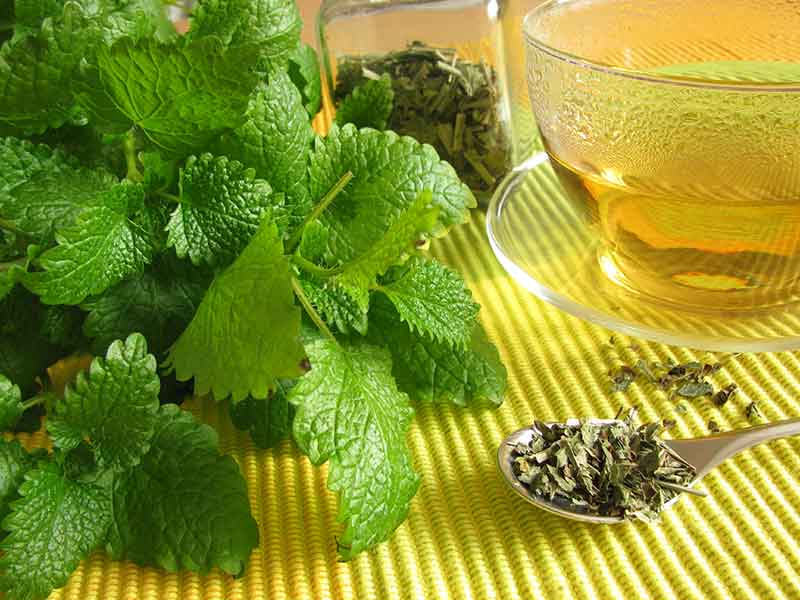
Lemon balm: A perennial herb also known as bee balm, this plant grows 2 to 3 feet high and attracts bees. It features foliage that adds a lemon tang to tea.11
Lemon balm may also help to reduce anxiety. One study found that lemon balm-containing foods promoted a reduction in stress.12 Another study found that when lemon balm is taken with other herbs, such as valerian, minor sleep problems are also improved.13
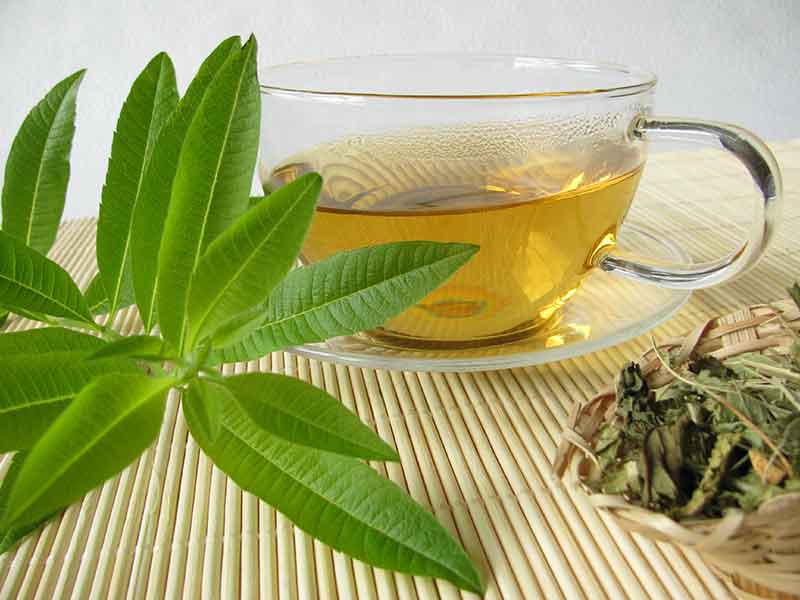
Lemon verbena: The lemon-scented leaves of this plant impart a strong lemon flavor to tea. The plant grows 2 to 4 feet high, although in climates with mild winter temperatures it will reach 10 feet tall. Deciduous, the plant loses its leaves in the late fall and resumes growth in spring.14
Lemon grass: Use the bulb, stalk and leaves of this plant to make lemon-scented tea. Lemon grass is a tender perennial that reaches 3 to 6 feet tall.15 In cold climates, it is grown as an annual.
Mint: This easy-to-grow perennial features a variety of flavors that make refreshing teas, including spearmint, peppermint, apple and chocolate. The plant grows 1 to 3 feet tall and spreads readily by underground rhizomes, which are stems that grow laterally below the soil's surface, creating new plants in other areas. Because of this tendency to spread, it's best to grow mint in a large container or raised bed to keep it from overtaking the landscape.16
Mint is a nutritious herb with high antioxidant content, including flavonoids,17 says Weiner. "Antioxidants can help your body's immune system stay strong and healthy.18 Peppermint tea also contains menthol, which can act as a natural decongestant.19 Many people also find that peppermint tea reduces bloating and helps with digestion."20
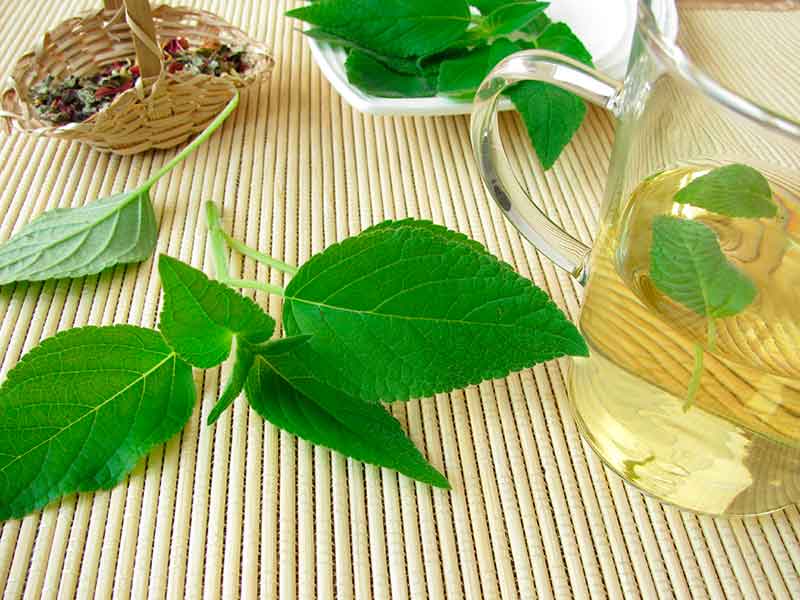
Pineapple sage (Saliva elegans 'Scarlet Pineapple'): This small shrub imparts the fresh taste of pineapple to herbal tea. It grows 3 to 5 feet high and features bright red flowers from late summer into fall.21
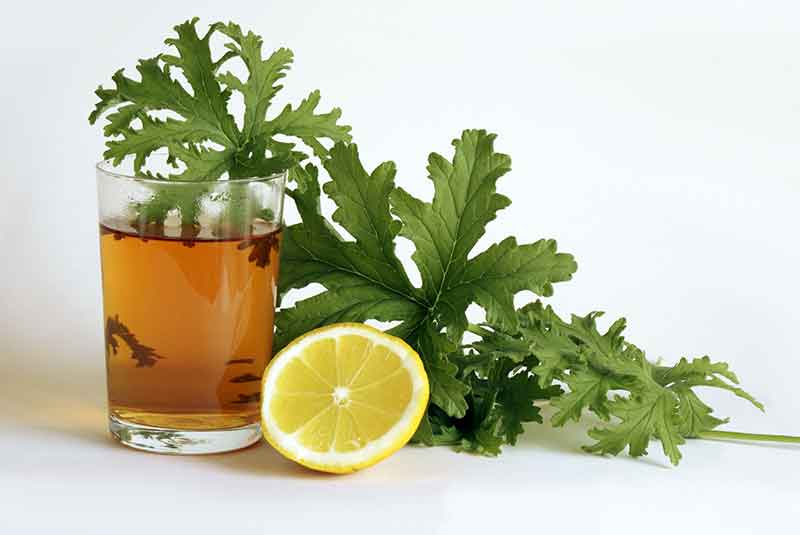
Scented geranium: Lemon, mint, strawberry, rose, apricot and apple are just some of the scented geraniums used to make tea. Depending on the variety, these plants grow 18 inches to 3 feet tall.22
Harvesting and Brewing Tea Herbs
Cut leaves, flowers and seeds for tea in the morning or evening, when the heat of the day is at its lowest. Use healthy, new foliage and flowers, as they have the strongest flavor, and always cut just above a set of new leaves.
For every cup of tea, use 2 to 3 tablespoons of fresh herbs or 1 to 2 tablespoons of dried herbs. Iced tea requires 4 to 8 tablespoons of fresh herbs or 3 to 4 tablespoons of dried herbs, because the beverage is diluted with ice.
Rinse fresh herbs, flowers and seeds well with water, and then pour boiling water over them. Let the mixture steep for at least five minutes until the water has darkened and the tea tastes like the herbs. Remove the herbs from the tea and add honey, sugar or a sugar substitute to taste and enjoy.
You can make a tea from one herb or blend several herbs for an even more stimulating taste sensation. Yummy tea blends include lemon grass, lemon verbena and lemon balm; pineapple sage with strawberry scented geranium; anise hyssop and bee balm; and lavender combined with lemon balm. Try a variety of combinations until you find your own favorite blends.
Drying and Storing Tea Herbs
If your plants produce more foliage than you can use, dry the remainder for future use. To do so, harvest and rinse the herbs well, shake off excess water, and then pat dry with a paper towel. Place the herbs in a large basket lined with cheese cloth, or hang them upside down in small bundles in a cool, dry place. Prevent molding while drying by ensuring the herbs receive good air-circulation.
When the herbs are completely dry, store them away from strong light in tightly sealed, labeled glass jars. Use them within six to eight months.
Conclusion
Drinking homegrown herbal tea offers you a chance to savor the bounty from your garden in a refreshing and healthy way. Grow your own tasty herbs, and you're likely to experience teas that surpass those sold in grocery stores.
GardenTech and the GardenTech family of brands are here to help you experience the joys of gardening.
Pennington is a registered trademark of Pennington Seed, Inc. Lilly Miller and Worry Free are registered trademarks of Central Garden & Pet Company.
Resources:
1. "Other Healthy Beverage Options," Harvard School of Public Health.
2. "Agastache foeniculum," Missouri Botanical Garden.
3. "Sweet Basil," University of Illinois Extension, 2015.
4. "Monarda didyma," Lady Bird Johnson Wildflower Center, July 15, 2015.
5. "How to Grow Chamomile," HerbalGardening.com.
6. Steven D. Ehrlich, NMD, "German Chamomile," University of Maryland Medical Center, March 25, 2015.
7. JD Amsterdam, et. al., "A randomized, double-blind, placebo-controlled trial of oral Matricaria recutita (chamomile) extract therapy for generalized anxiety disorder." U.S. National Library of Medicine, National Institutes of Health, August 29, 2009.
8. "Fennel," Cornel University, 2006.
9. Edward F. Gilman, "Lavandula angustifolia, Lavender, English Lavender," University of Florida IFAS Extension, February 2014.
10. Peir Hossein Koulivand, et. al, "Lavender and the Nervous System," U.S. National Library of Medicine, National Institutes of Health, March 14, 2013.
11. Hyrum Gillespie and Dan Drost, "Lemon Balm in the Garden," Utah State University, February 2008.
12. Andrew Scholey, et. al, "Anti-Stress Effects of Lemon Balm-Containing Foods," U.S. National Library of Medicine, National Institutes of Health, October 30, 2014.
13. "Lemon Balm," University of Michigan Health System, April 14, 2015.
14. "Lemon Verbena," Penn State Extension, 2015.
15. Terra Linse and Dan Drost, "Lemongrass Cymbopogon citratus," University of Florida Nassau County Extension, 2006.
16. "Mint," University of Illinois Extension, 2015.
17. DL McKay DL and JB Blumberg, "A review of the bioactivity and potential health benefits of peppermint tea (Mentha piperita L.)," U.S. National Library of Medicine, National Institutes of Health, August 20, 2006.
18. Kanti Bhooshan Pandey and Syed Ibrahim Rizvi, "Plant polyphenols as dietary antioxidants in human health and disease," U.S. National Library of Medicine, National Institutes of Health, Nov.-Dec. 2009.
19. R. Eccles, "Menthol: effects on nasal sensation of airflow and the drive to breathe," U.S. National Library of Medicine, National Institutes of Health, May 3, 2003.
20. Steven D. Ehrlich, Peppermint, University of Maryland Medical Center, July 6, 2014.
21. Steve Christman, "Salvia elegans," Floridata, September 5, 2003.
22. Kathy Brown, "Scented Geraniums," CSU/Denver County Extenion Master Gardener, 2010.
Get Monthly Gardening Advice!





